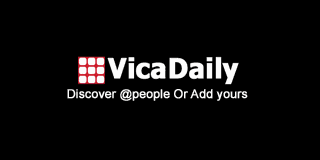Project Scheduling: The Backbone of Successful Project Management
In any project—whether it's building infrastructure, developing software, or launching a marketing campaign—time is one of the most critical resources. Managing it effectively is the key to meeting goals and delivering results. That’s where project scheduling comes into play.
Project scheduling is more than just listing tasks and setting deadlines. It’s a strategic process that involves mapping out project activities, assigning resources, setting dependencies, and forecasting the timeline for completion. A well-structured project schedule is the backbone of any successful project.
What is Project Scheduling?
Project scheduling is the process of defining the timeline for project tasks, identifying milestones, allocating resources, and establishing start and end dates. It provides a visual roadmap that guides teams from initiation to completion.
The goal is to ensure the project stays on track, avoids delays, and meets its objectives within the planned time and budget.
Key Components of Project Scheduling
To build an effective project schedule, several core elements need to be included:
1. Task Breakdown (WBS)
The Work Breakdown Structure (WBS) divides the overall project into manageable tasks or work packages. Each task should be clearly defined, measurable, and achievable.
2. Task Sequencing
Tasks often depend on each other. Project scheduling includes identifying task dependencies, such as which task must be completed before another can begin.
3. Time Estimation
Each task must have a realistic time estimate. This could be in hours, days, or weeks, depending on the complexity of the task.
4. Resource Allocation
Assigning the right people, tools, and materials to each task is essential. Resource constraints must also be taken into account.
5. Milestones and Deadlines
Milestones mark major project phases or deliverables. These help in tracking progress and keeping stakeholders informed.
6. Critical Path Method (CPM)
CPM helps identify the longest sequence of dependent tasks and the shortest time to complete the project. Delays on the critical path directly impact the project’s end date.
Popular Project Scheduling Techniques
There are various techniques and tools used to create effective project schedules:
● Gantt Charts
A Gantt chart is a visual representation of the project timeline. It displays tasks, durations, dependencies, and progress. It's ideal for tracking and updating schedules.
● Critical Path Method (CPM)
CPM helps determine the most crucial tasks that must be completed on time to avoid project delays.
● Program Evaluation and Review Technique (PERT)
PERT is used when task durations are uncertain. It applies weighted averages for optimistic, pessimistic, and most likely completion times.
● Agile and Scrum Boards
In software and product development, Agile boards and sprints help schedule short iterations with fixed goals and timeframes.
Why Project Scheduling is Important
Effective scheduling brings numerous benefits to teams and organizations:
✔ Better Time Management
A clear schedule helps avoid last-minute rushes and ensures that everyone knows what to do and when.
✔ Cost Control
Delays often lead to budget overruns. A structured schedule helps keep the project within budget by optimizing time usage.
✔ Efficient Resource Use
Scheduling ensures that team members and materials are available when needed—reducing downtime and conflict.
✔ Risk Mitigation
By identifying dependencies and critical paths early, project managers can proactively manage risks and develop contingency plans.
✔ Improved Communication
A project schedule provides clarity to stakeholders, team members, and clients. It becomes a shared reference point that aligns everyone.
Common Challenges in Project Scheduling
Despite its importance, project scheduling is not without challenges:
-
Inaccurate Time Estimates: Over-optimism or lack of experience can lead to unrealistic schedules.
-
Scope Creep: Changes in project scope mid-way can disrupt timelines.
-
Resource Limitations: Lack of available team members or tools can slow progress.
-
Poor Communication: Without regular updates, even a great schedule can become obsolete quickly.
Using dynamic scheduling tools and maintaining flexibility is key to overcoming these hurdles.
Best Practices for Effective Project Scheduling
To improve scheduling effectiveness, project managers should consider these tips:
-
Start with a Clear Scope: Know exactly what needs to be delivered.
-
Use Reliable Tools: Platforms like Microsoft Project, Asana, Trello, or Primavera can simplify the process.
-
Engage the Team: Collaborate with team members when setting timelines to get realistic estimates.
-
Review Regularly: Schedule progress reviews and make adjustments as needed.
-
Identify Risks Early: Use risk analysis to foresee potential delays.
-
Maintain Flexibility: Build in buffer time for unpredictable delays.
Conclusion
In today’s fast-paced project environments, project scheduling is not optional—it’s essential. It helps manage time, resources, and expectations while reducing risks and improving outcomes. Whether you’re managing a small team or a multi-million-dollar construction project, a solid schedule lays the foundation for success.
Organizations that master the art of project scheduling are better equipped to deliver on time, within budget, and with high quality—every time.





